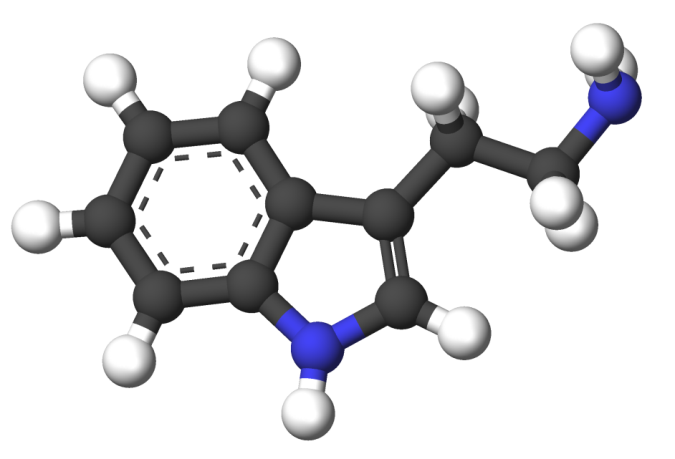
Tryptamine is a kind of monoamine alkaloid, which contains an indole ring structure, and the structure is similar to the amino acid tryptophan. Tryptamine is reported in trace amounts in the brains of mammals, and the concentration of Tryptamine in rat brains is about 3.5 pmol/g. The function of is Tryptamine in brain is hypothesized to play a role as a neuromodulator or neurotransmitter. Tryptamine is one of common functional group in a set of compounds termed substituted Tryptamines collectively, which includes many biologically activecompounds, for example neurotransmitters and psychedelic drugs.
Scientists at Creative Proteomics utilize a highly quantitative method with high-performance liquid chromatography (HPLC) for the determination of Tryptamine levels in various samples, including Serum, Tissue and more. Biogenic amines of Tryptamine in a lot of biological samples were detected by High-Performance Liquid Chromatography (HPLC), using precolumn derivatization with DNS-Cl. This Methodology provides accurate, reliable, and reproducible results of Tryptamine measurement, which enables us to analyze of Tryptamine levels in vitro and in vivo.
Small amounts of Tryptamine is also can be found in Many plants, and it is a feedstock for the metabolic pathways which influence plant growth and microbiome.For example, it is reported can be as a possible intermediate in in one biosynthetic pathway for one of plant hormone- indole-3-acetic acid. Higher concentrations can be found in many Acacia species. Tryptamine has a very short half-life in vivo because it is rapidly metabolized by MAO-A and MAO-B. Tryptamine also is reported as a noncompetitive inhibitor for serotonin N-acetyltransferase (SNAT), which catalyzes the anabolic metabolism of serotonin into N-acetylserotonin, neuromodulator and the immediate precursor for melatonin in mosquitoes.
The Russian-Polish botanist M. Tswett is generally recognized as the first person to establish the principles of chromatography. In a paper he presented in 1906, Tswett described how he filled a glass tube with chalk powder (CaCO3) and, by allowing an ether solution of chlorophyll to flow through the chalk, separated the chlorophyll into layers of different colors. He called this technique “chromatography”. Fundamentally, chromatography is a technique used to separate the components contained in a sample. High Performance Liquid Chromatography (HPLC) is a method able to separate non-volatile, thermally unstable, and polar components separate or in a mixture. HPLC is a type of chromatography that, because of its wide application range and quantitative accuracy, is regarded as an indispensable analytical technique, particularly in the field of organic chemistry. It is also widely used as a preparation technique for the isolation and purification of target components contained in mixtures.
Tryptamine Analysis Service at Creative Proteomics supports your research in Tryptamine Analysis. HPLC Based Analysis Service Platform enable us at Creative Proteomics offers you a state-of-the-art Analysis Service.
Sample Type
Serum, Tissue and more
Method
Biogenic amines of Tryptamine in a lot of biological samples were detected by High-Performance Liquid Chromatography (HPLC), using precolumn derivatization with DNS-Cl. This Methodology provides accurate, reliable, and reproducible results of Tryptamine measurement, which enables us to analyze of Tryptamine levels in vitro and in vivo.
Send us your samples, you will get all information that you need!







